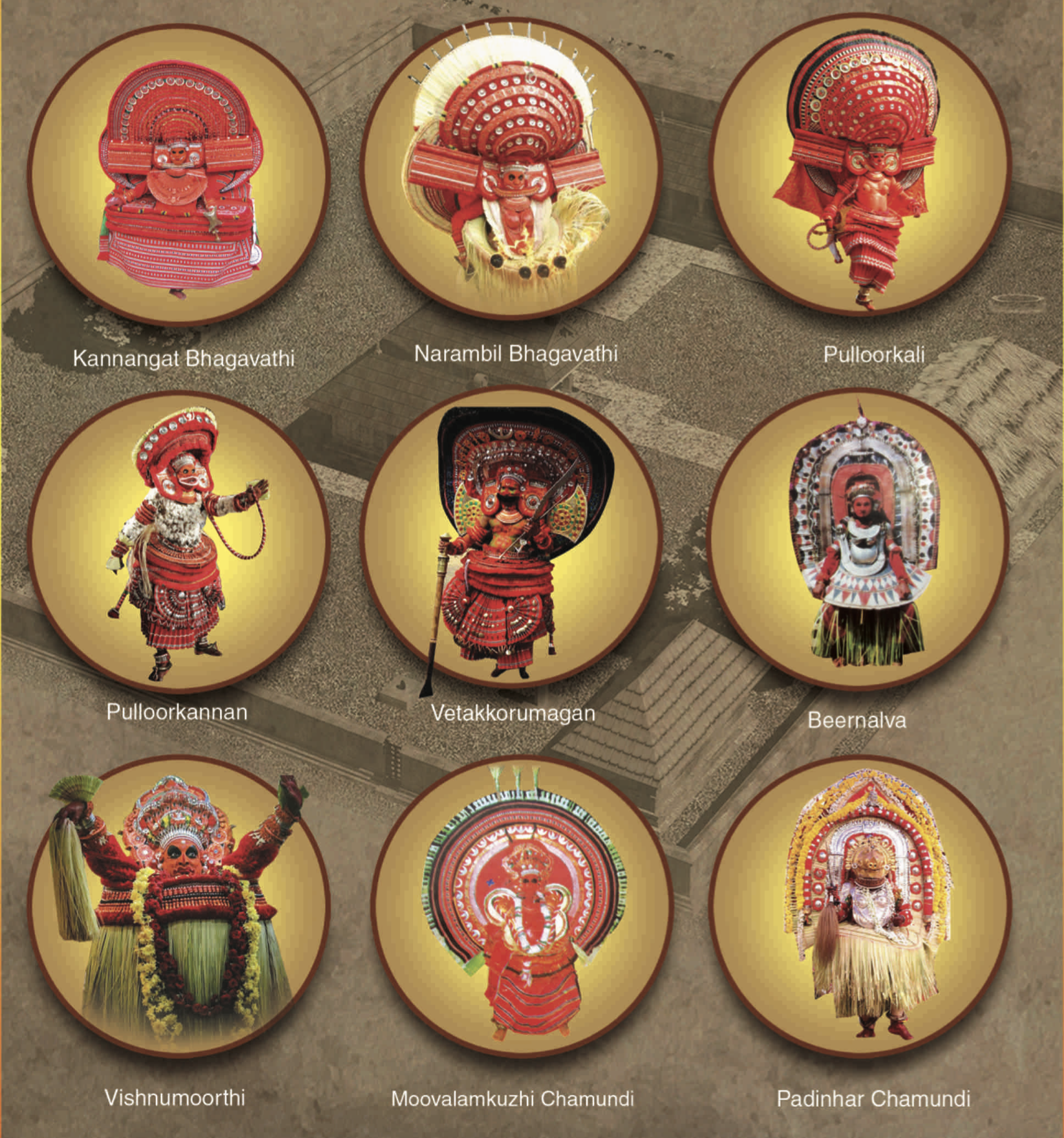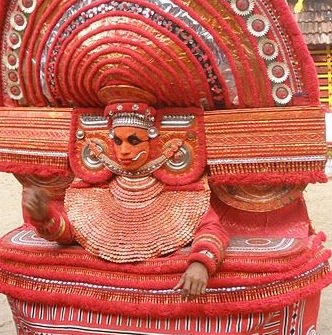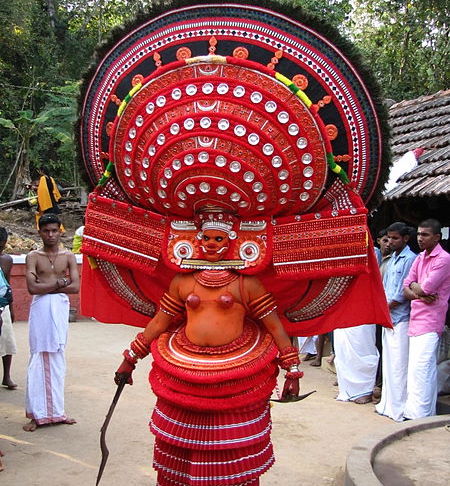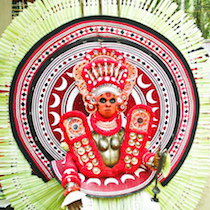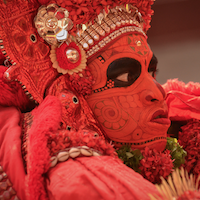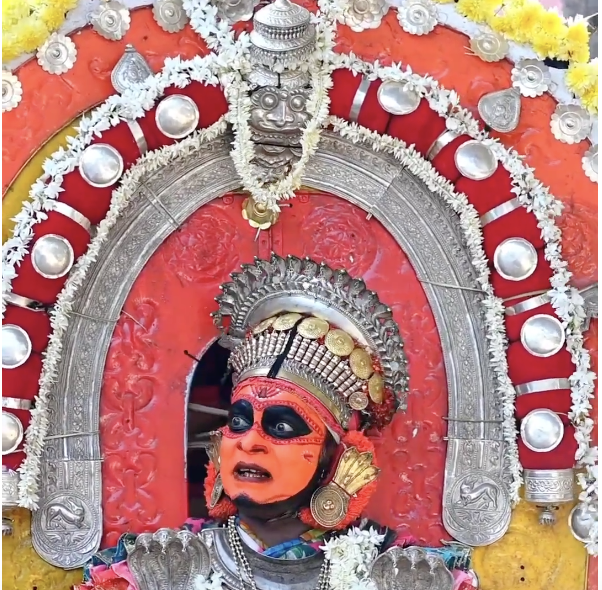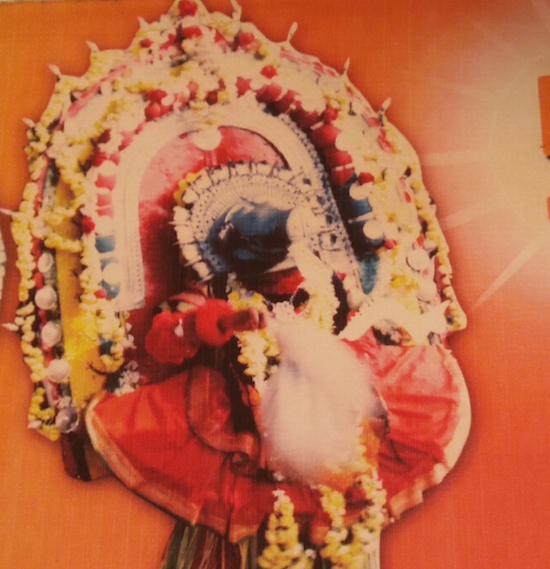Pullur Kali Bhagavathi and Pullura Kannan
Pollur Kali is revered as a goddess and Pullur Kannan as a male deity. These divine figures are known as Puli (tiger) theyyams. Their tale unfolds with Lord Shiva and his consort Parvati, who took the guise of tigers while dwelling in a forest. In time, they were blessed with five tiger cubs, named Kanda Puli, Mara Puli, Kala Puli, Puliyoor Kannan, and Pullur Kali. Shortly after their birth, Shiva and Parvati, having bestowed their blessings upon the cubs, departed for their abode in Kailasa.
As the cubs grew, they ventured from the forest and roamed the neighboring villages. On one occasion, they preyed upon cows owned by Karumbranthiri Vanavar. Enraged, he dispatched Karinthiri Nair to eliminate the tigers, but Nair met the same fate as the cows. When Karinthiri Nair failed to return, Karumbranthiri Vanavar set out to find him, but his servants struggled to move his cart. After praying to his family goddess, the cart miraculously began to move. A celestial voice then informed him that the tigers were not mere animals, but deities in tiger form, and that Karinthiri Nair was now in their company. Heeding the advice of astrologers, Karumbranthiri Vanavar commenced the ritual of theyyam to honor the tiger deities and Karinthiri Nair.
